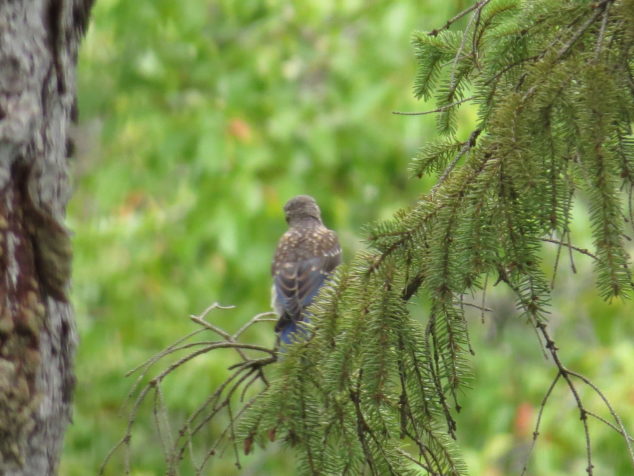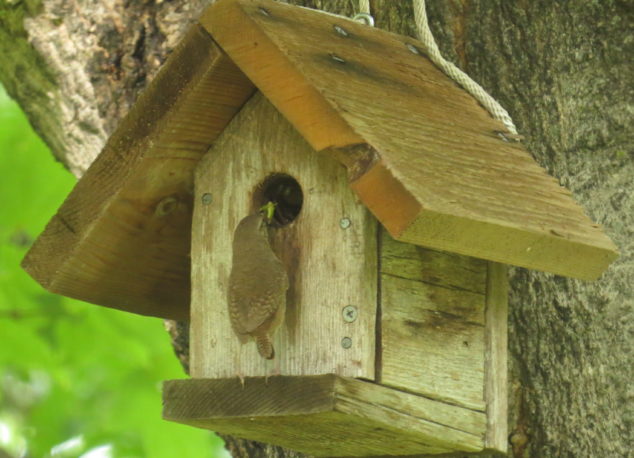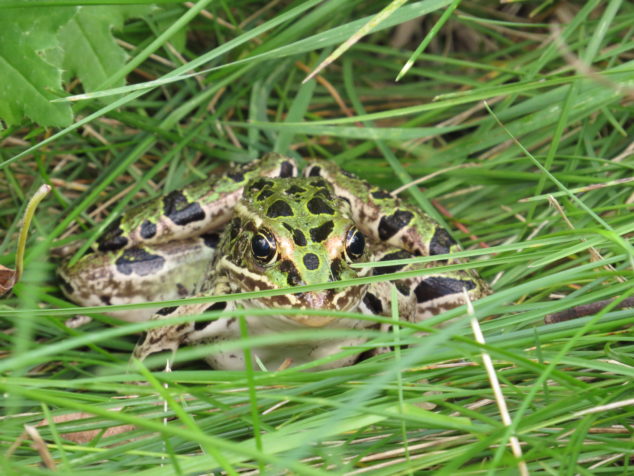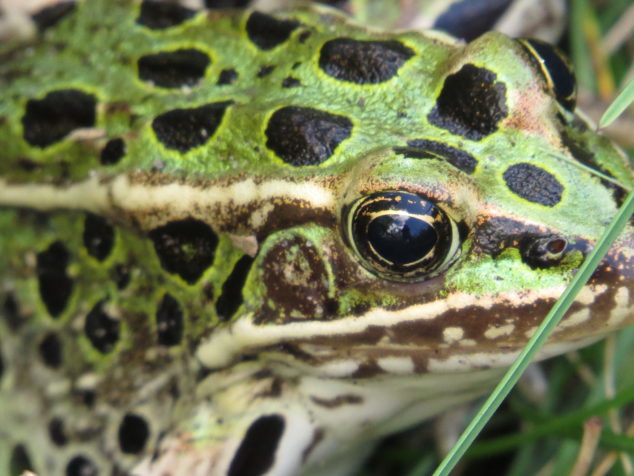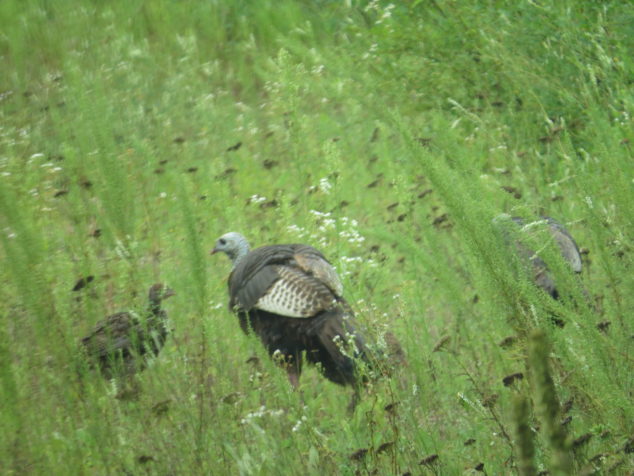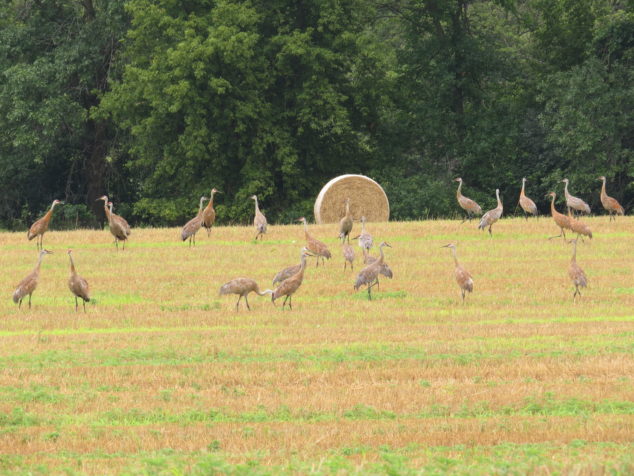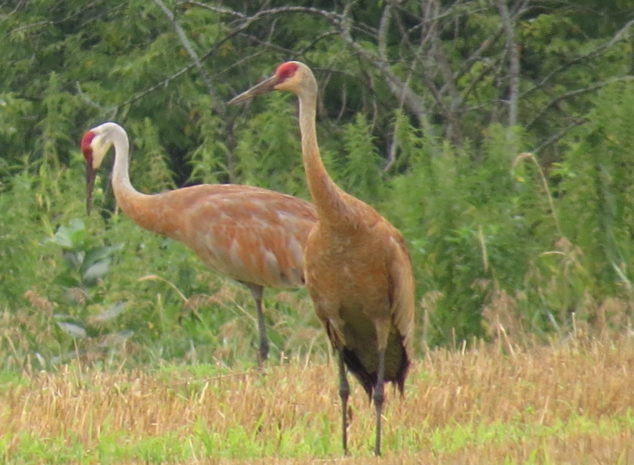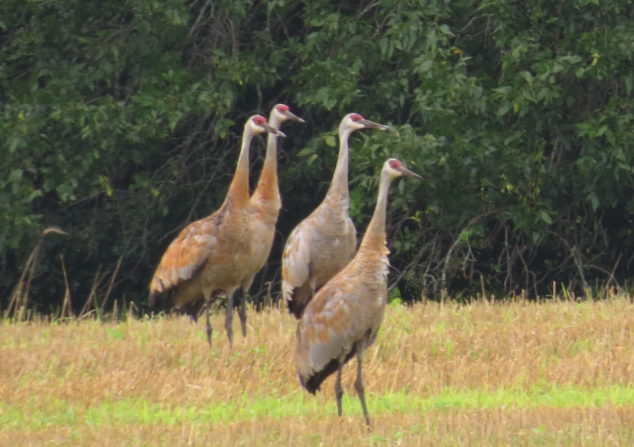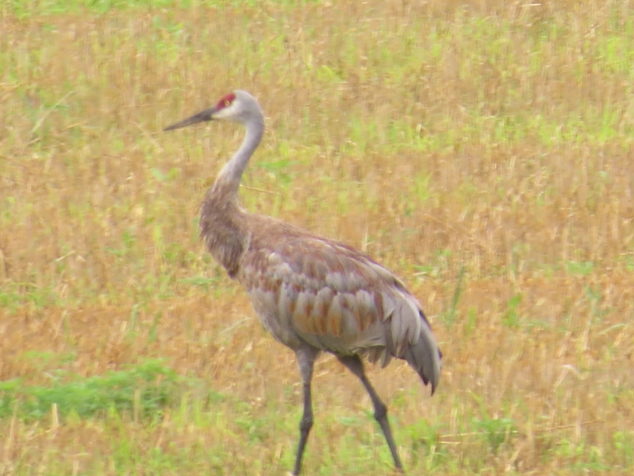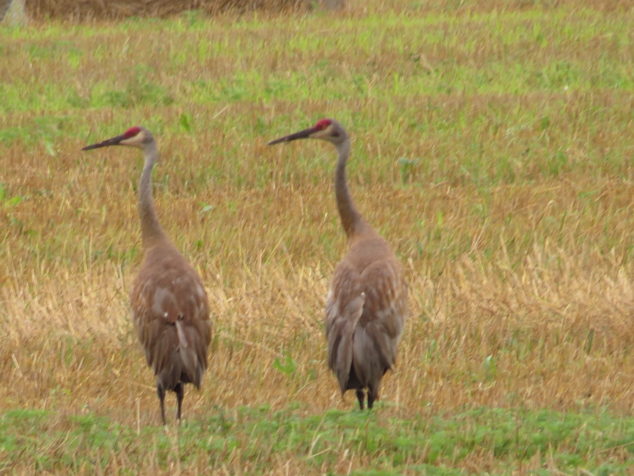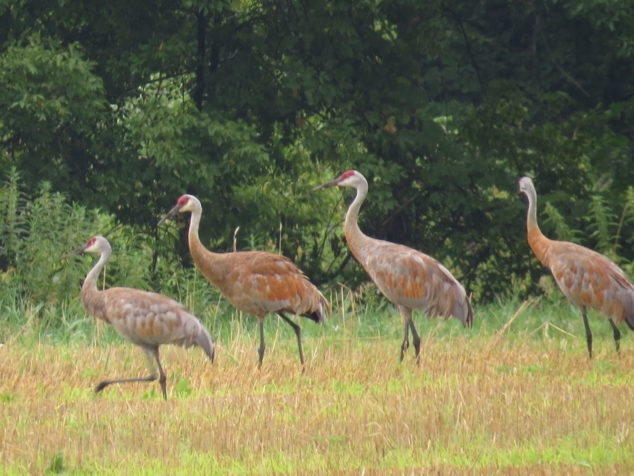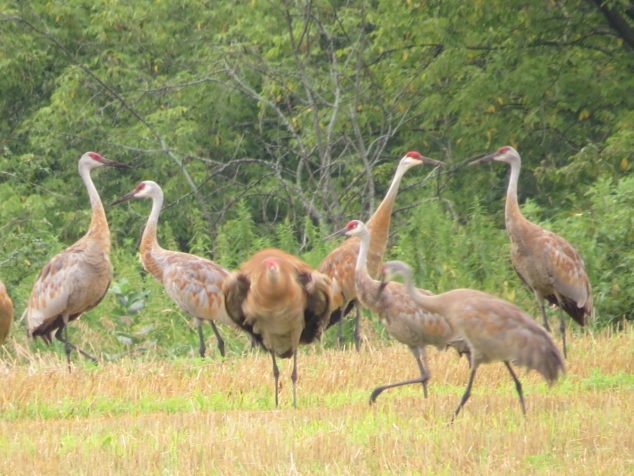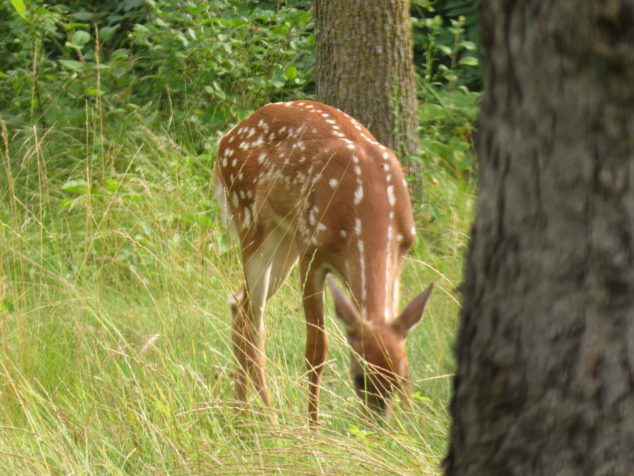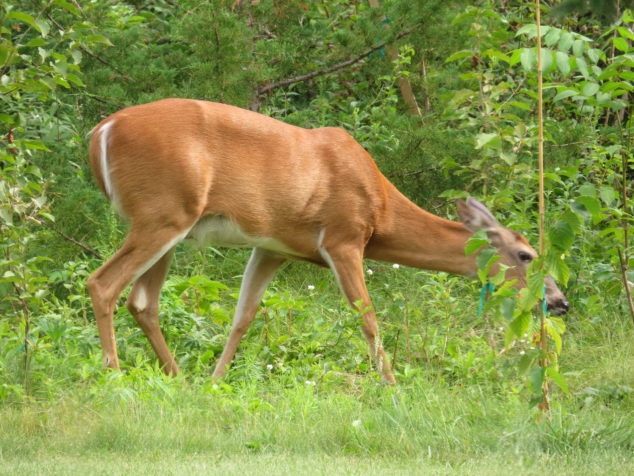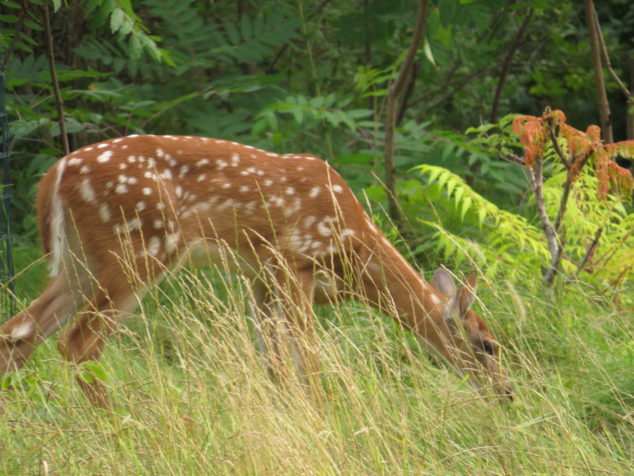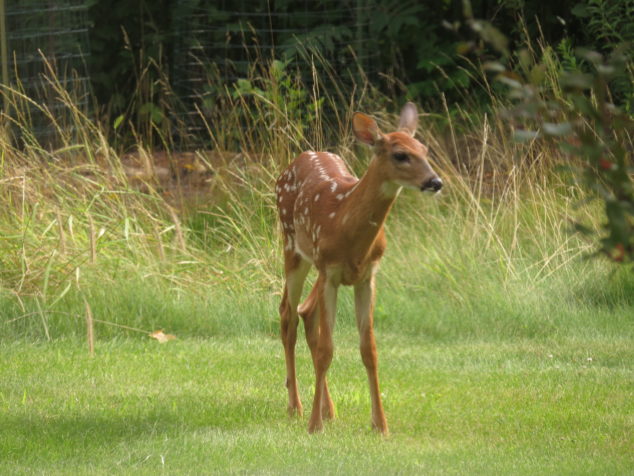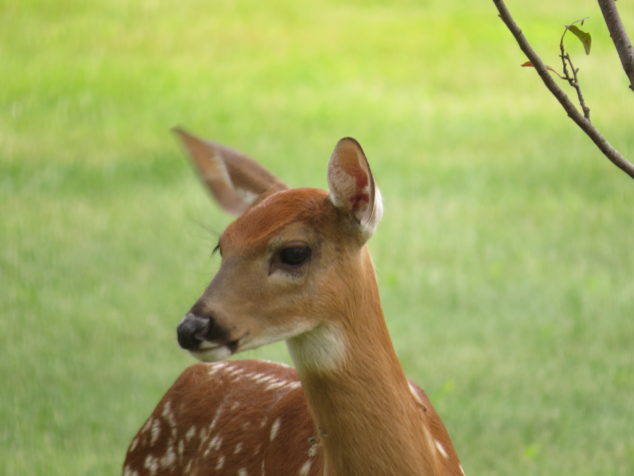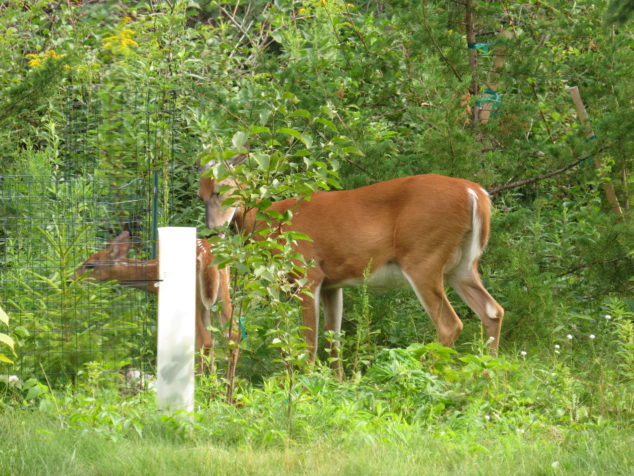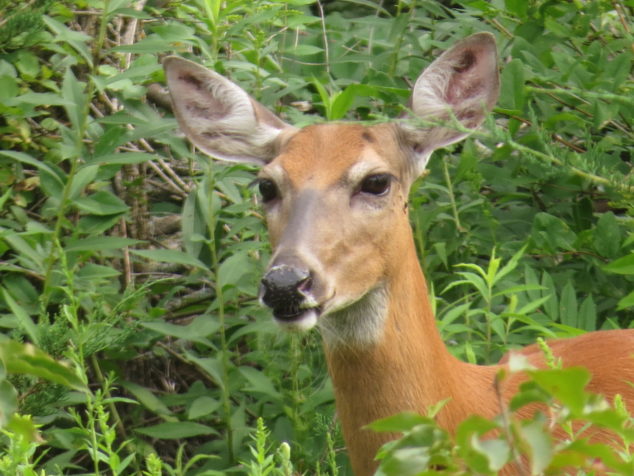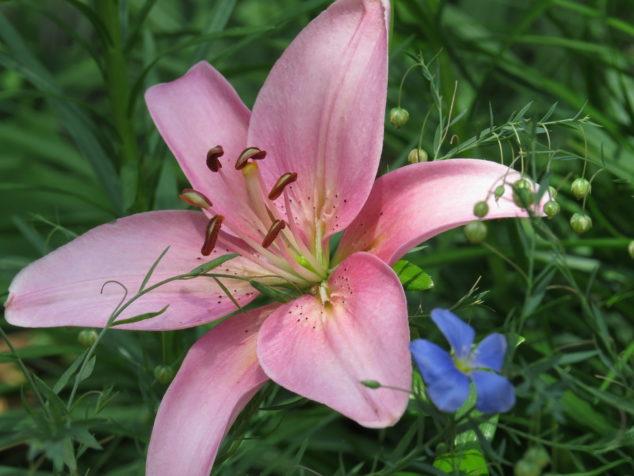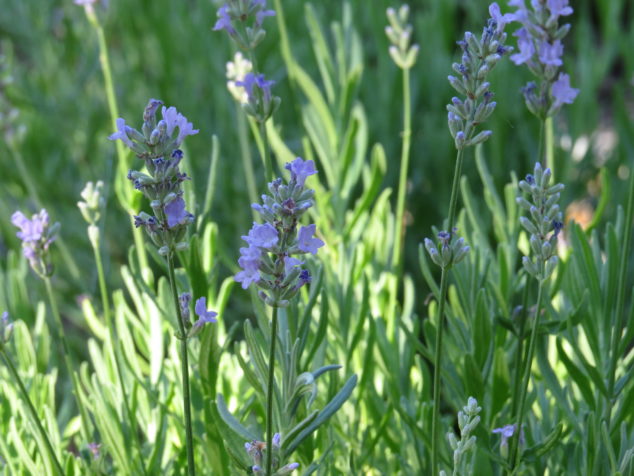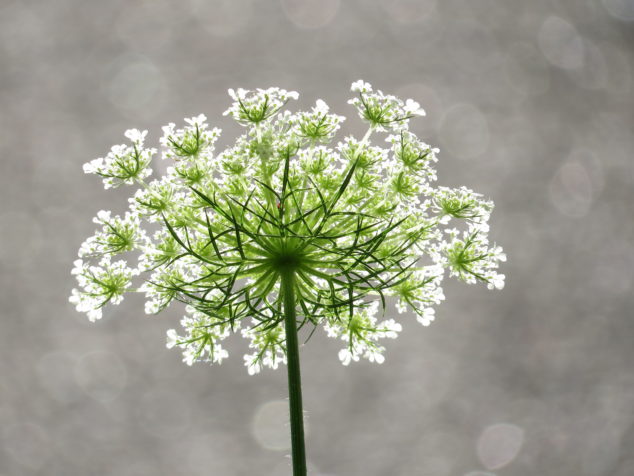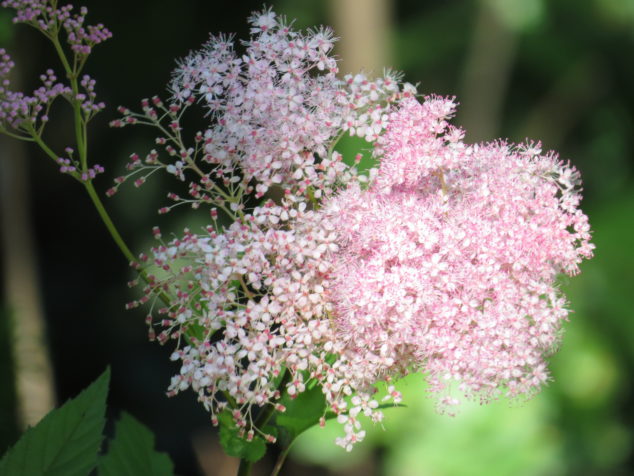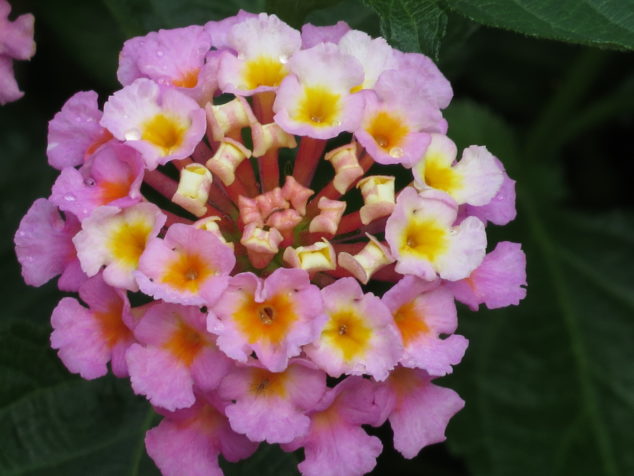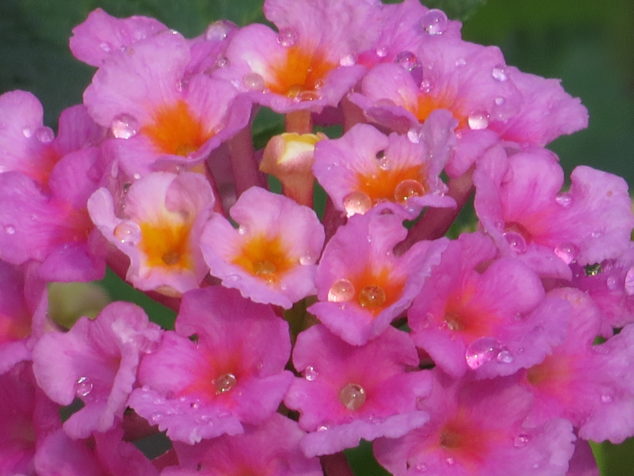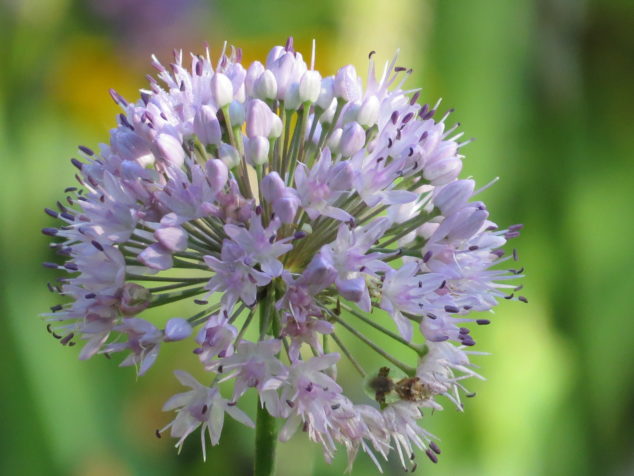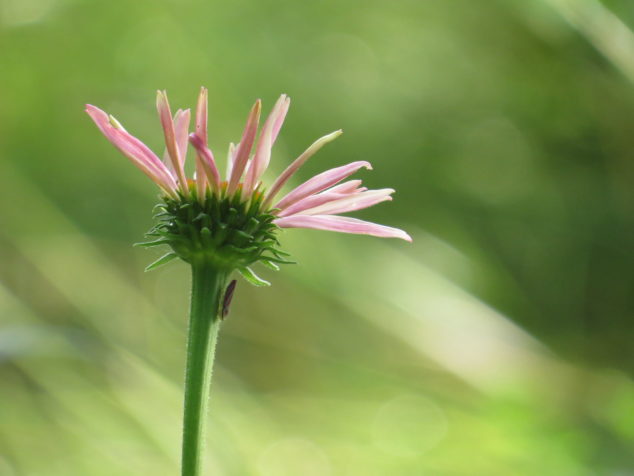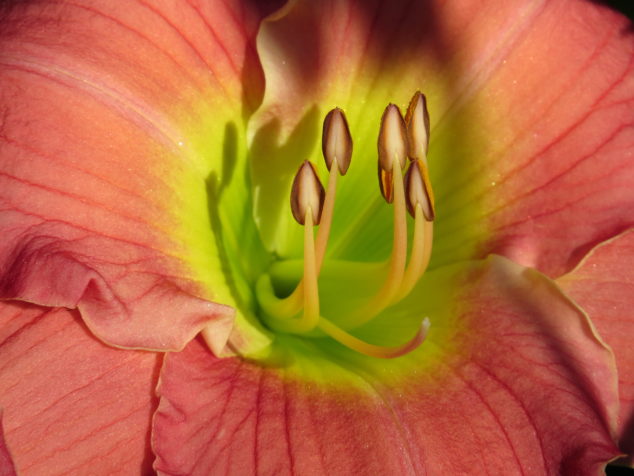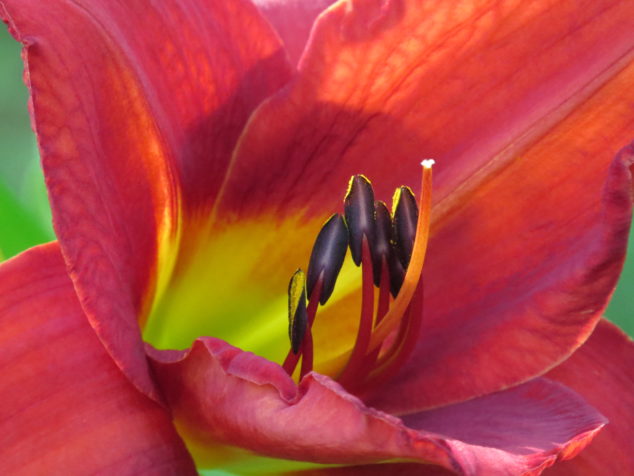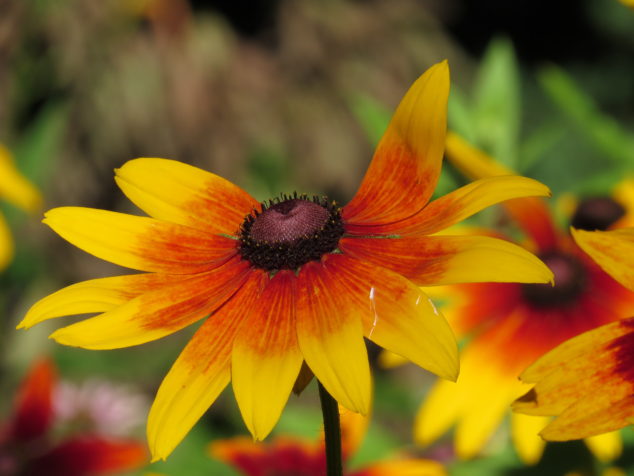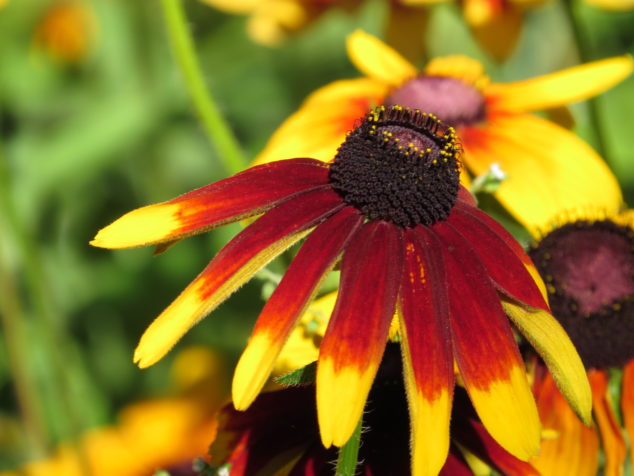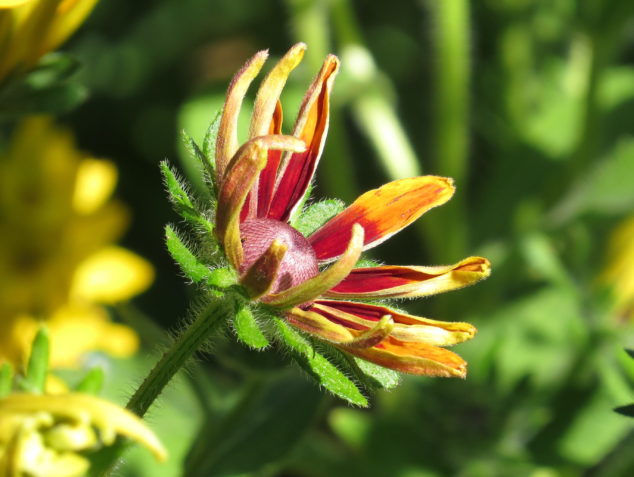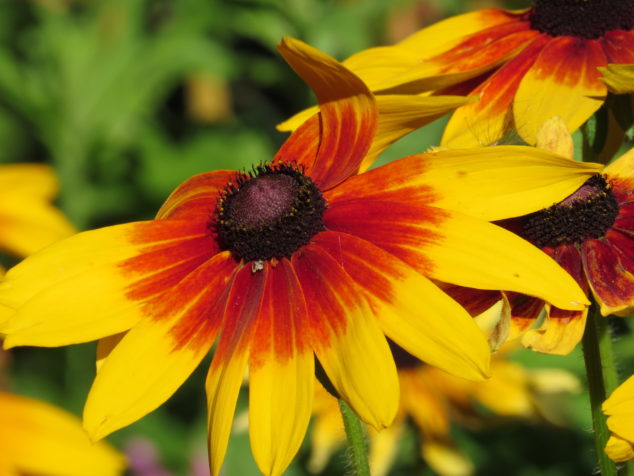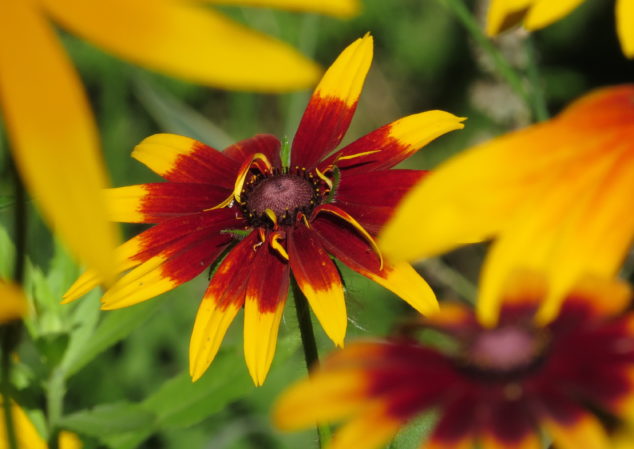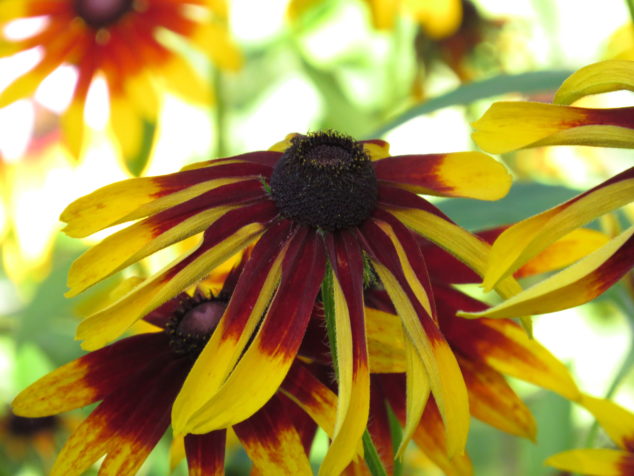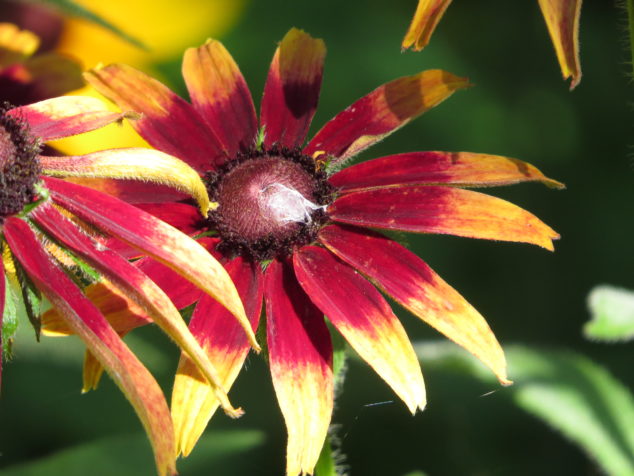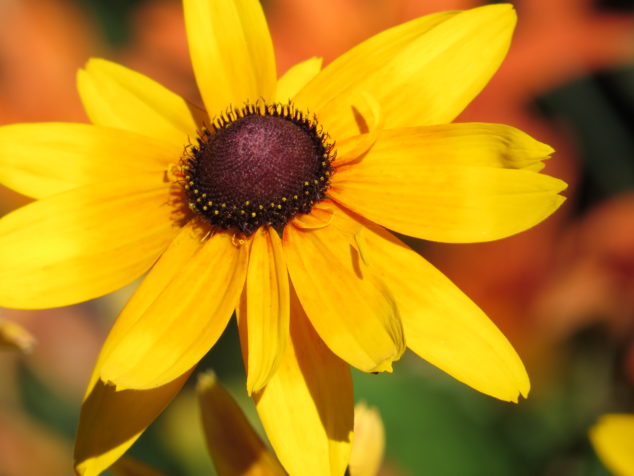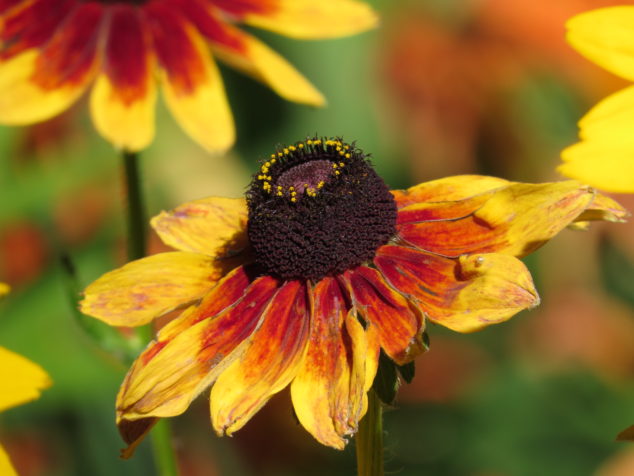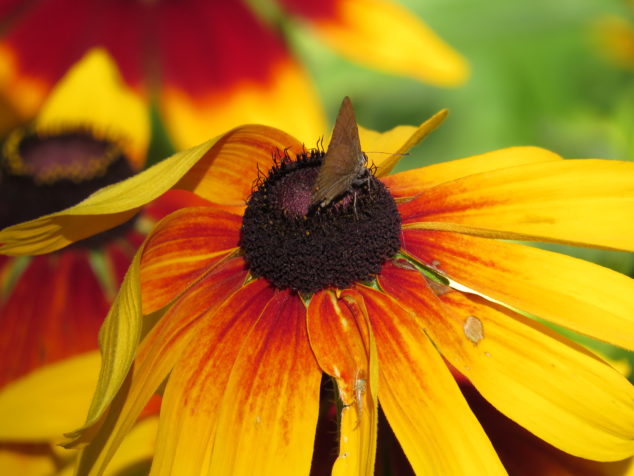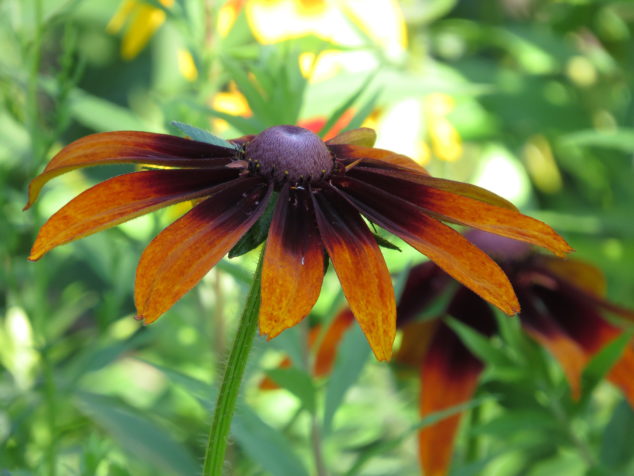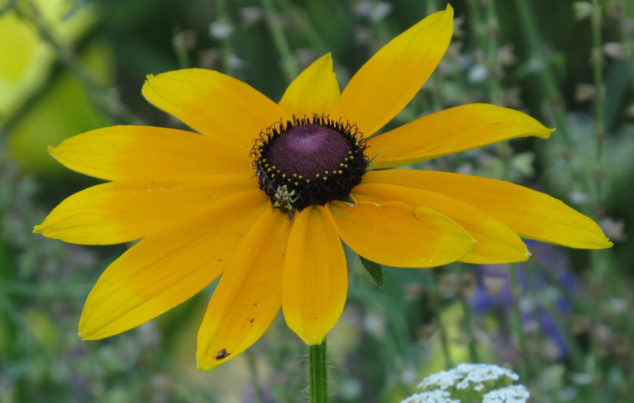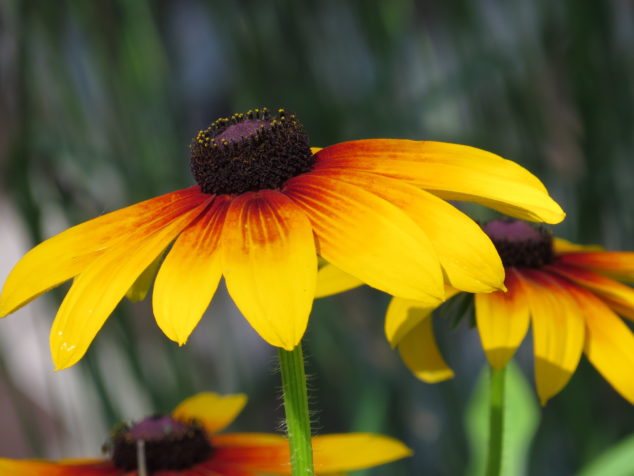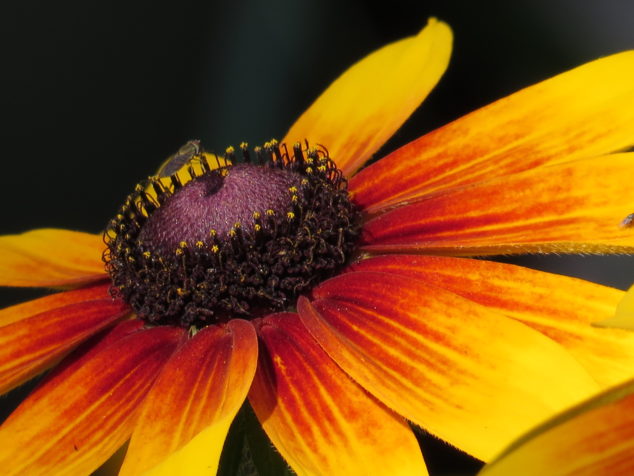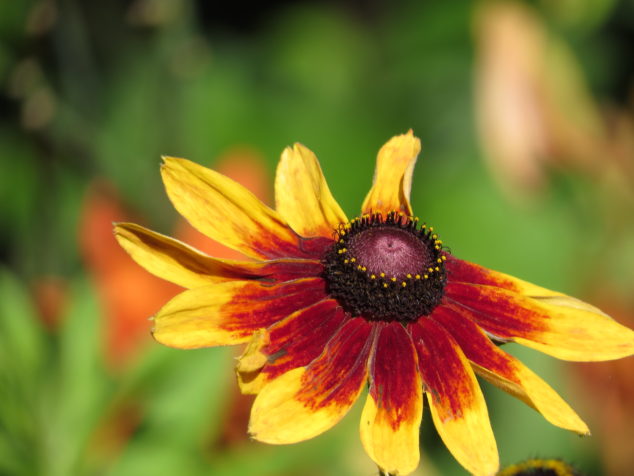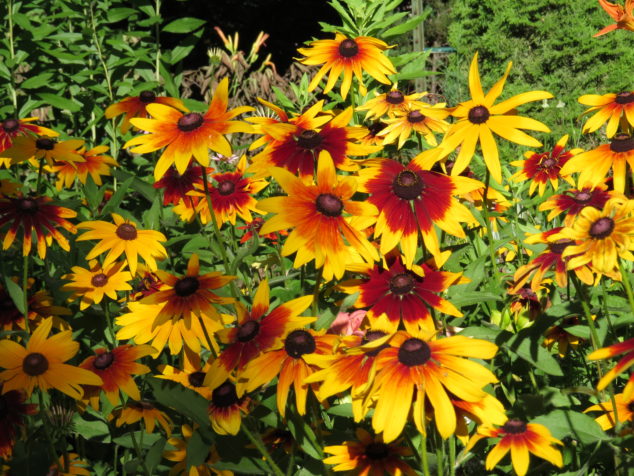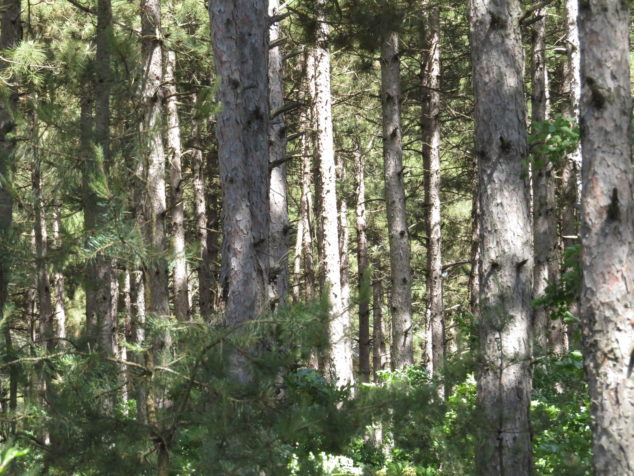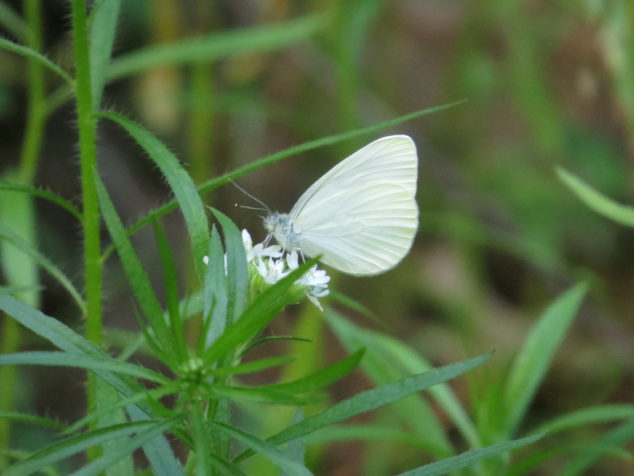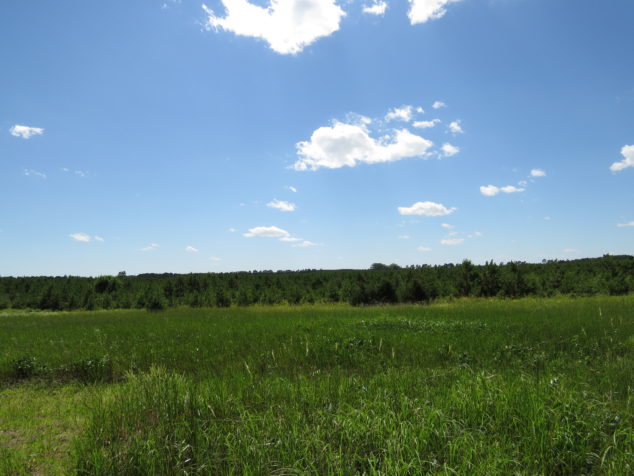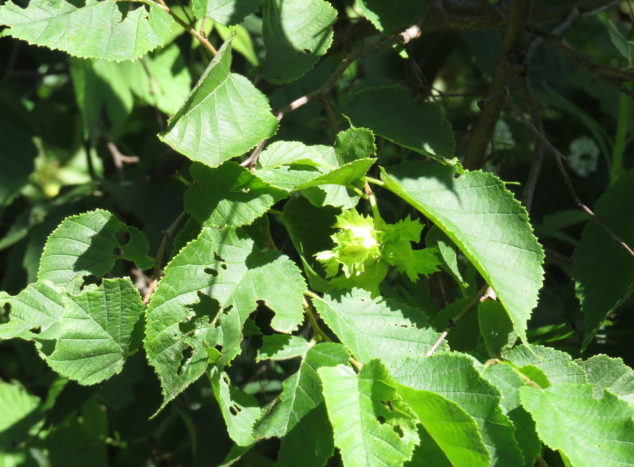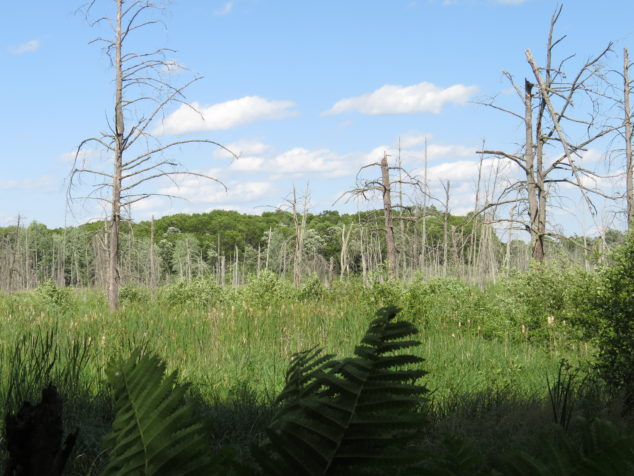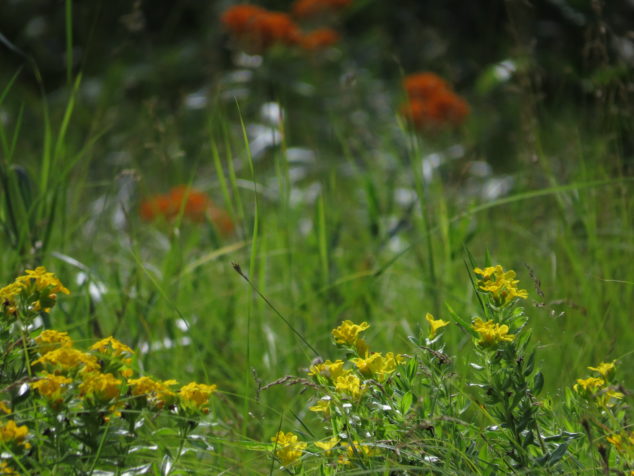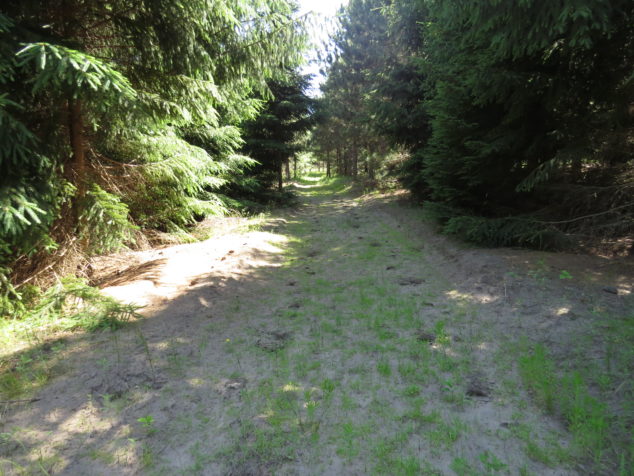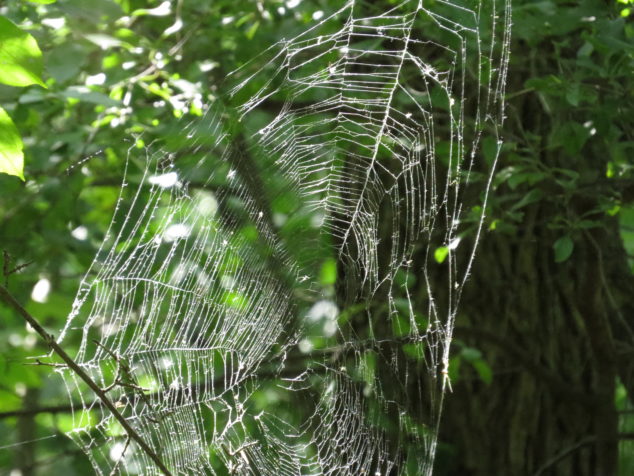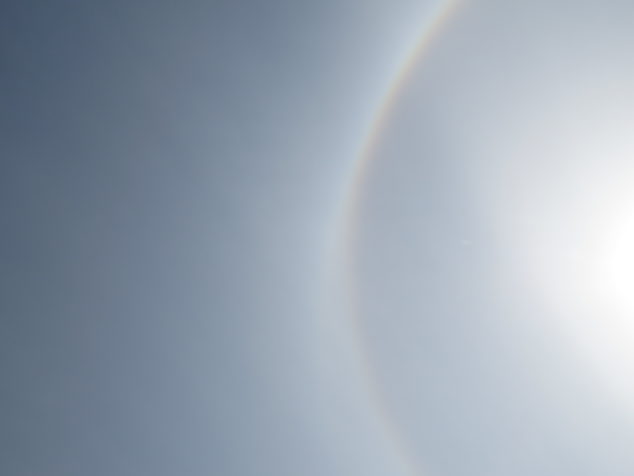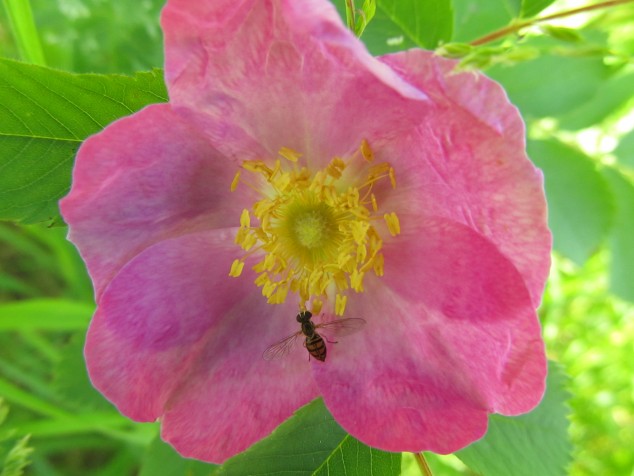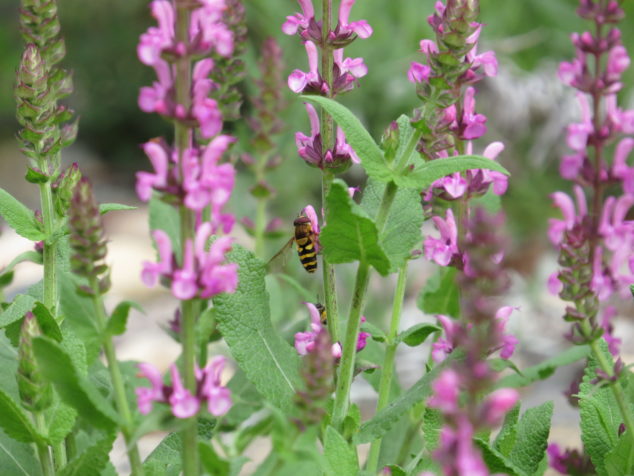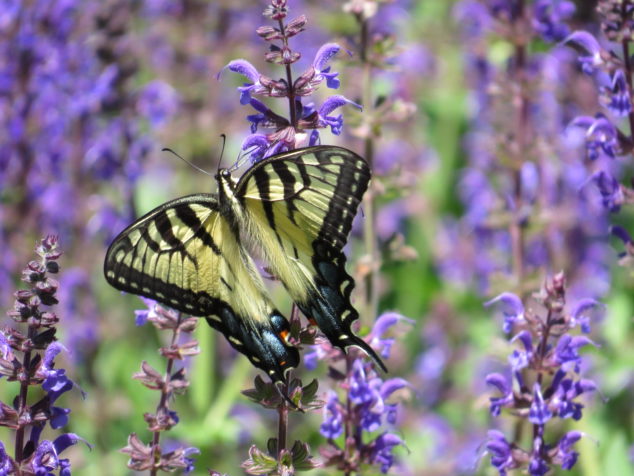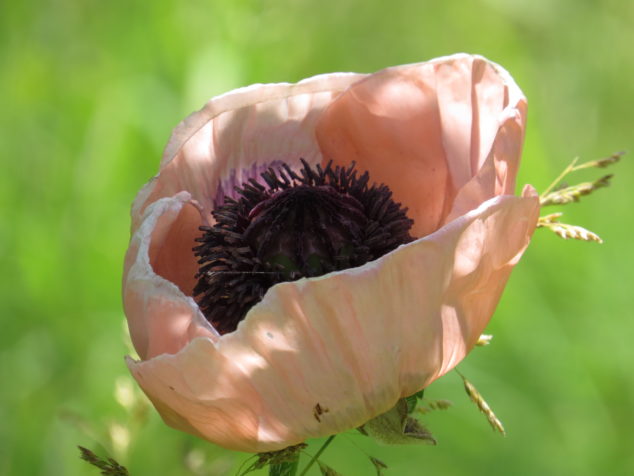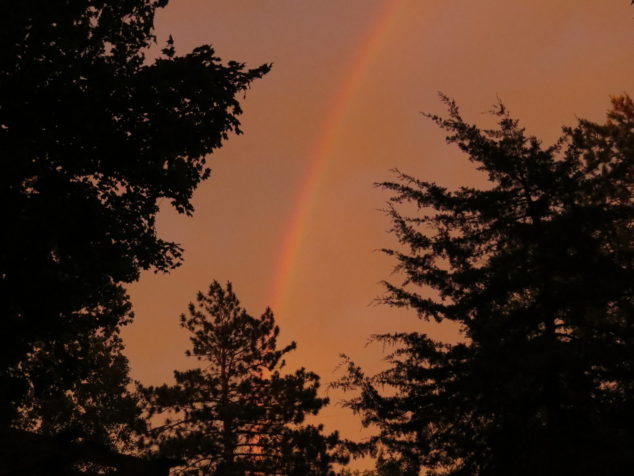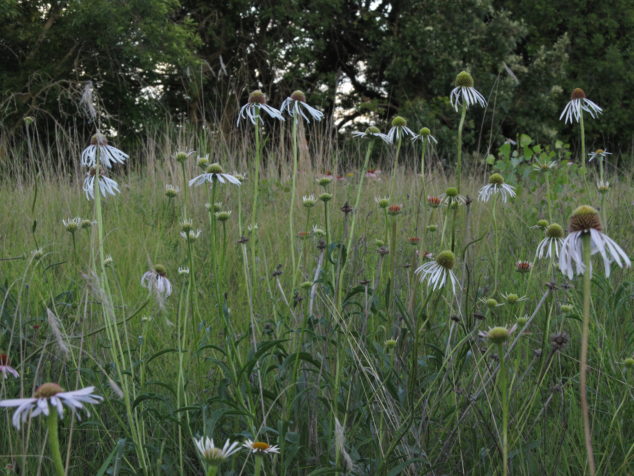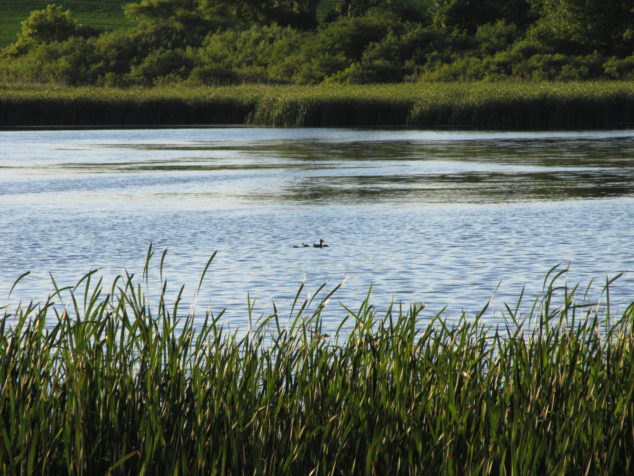Animals have always been such an important part of my life. When I was very young, we had a menagerie of farm animals–Holstein dairy cows, a black Mustang horse, chickens, cats, dogs, pigs, and sheep. Later in my growing up years we had a rabbit, ducks, cats, dogs, and horses. (I tend to leave out the hamster who I did not like–he was too squishy and mouse-like.) Horses were the best; I loved everything about them–brushing their dusty coats and tangley tails, feeding them sweet feed and fragrant hay, saddling and riding them through fields and woods, and even cleaning out and shaking fresh straw into their stalls.
July has not only been a month of flowers, but one of animals, too. The young Bluebirds who fledged the nest have been swooping to the ground to pick up insects, then quickly flying back up to tree branches, just like their parents.
The chattering House Wrens are on their second brood of young ones and spend most of the day hunting for insects for the hungry houseful. (See my post of wren babies fledging from the nest.)
When I was weeding the garden one day, a Leopard frog leaped out from under the kale and hid in the grass.
Have you ever seen your reflection in the eye of a frog?
Mother turkeys and their young broods have been wandering through the yard and woods, scratching and pecking for food.
A call from Chris one morning alerted me to come check out a field close to his work. I pulled into a field driveway, walked across the road, and saw a large community of Sand Hill Cranes! There were about forty in all, gleaning the kernels from the grain field.
Sandhill cranes mate for life, choosing their partners based on spring mating dancing displays. They live for twenty years or longer.
The young ones stay with their parents through the winter and separate the following spring, but can take up to seven years to choose a mate.
A pair of sentries closest to me, but still on the far side of the field, started making alarm calls as they watched me.
The others slowly began gathering and walking along the edge of the field.
This photograph of beautiful bird behavior, after the sentries sounded the ‘beware’ call, illustrates a variety of responses. The one in the middle is ‘shaking it off,’ the two adults in the back right seem to be discussing the problem–“what do you think–is that figure holding the black box really a threat?” and the young ones in the front are following directions–“walk to your left.”
I was fortunate to witness another display of articulate animal behavior in our front yard the other day. I saw a doe with her fawn grazing along the edge of our yard. (Look at the line of spots on either side of the spine.)
The doe stayed in much the same spot, and I hoped she wasn’t munching on the hazelnuts Chris recently planted. She was as sleek and healthy-looking as I’ve ever seen a deer, so she must have been eating nutritious food. (Hmm, some of our hostas had been eaten down to the stems…)
The fawn wandered out in front of the doe.
Soon he ventured out into the mowed part of the lawn, bucked, and kicked up his heels.
With cautious curiosity, he walked to the crabapple tree and nibbled on a few leaves.
Suddenly, something scared him, and he ran as fast as he could back to his mom! Immediately she started licking him. He stood close to her and continued to graze as she licked his back, reassuring him that he was okay. After a few minutes of that, he slowly pulled away to wander on his own again.
Then they slipped back into the woods.
I have learned many things about myself and life from all the animals over the years. Anyone who has ever been astride a horse that is spooked by something, knows in his/her body what the fight or flight response feels like. Consequently, one learns how to soothe the horse and let him know that he’s okay. If you have seen a mother cat caring for her kittens–nursing them, hunting for them, cleaning them, keeping them safely hidden when small, and teaching them to be on their own–then you know what parenting entails. We often forget that we are one of the many animal species and that we have much in common with them. So watch closely in the presence of animals–we can see the reflection of ourselves in their eyes.
